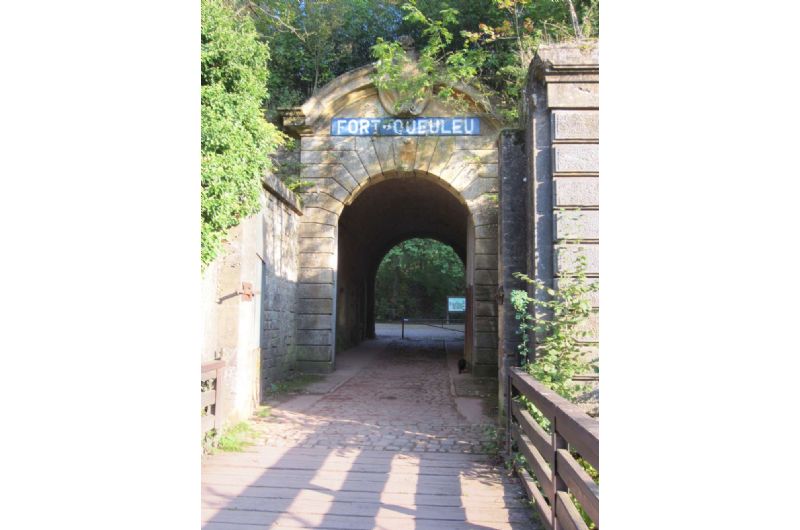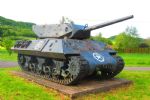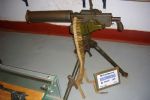Queuleu Fort
During the phony war, theFort de Queuleu was occupied by several French regiments: the 13th Algerian Rifle Regiment, the 165th Position Artillery Regiment and the 68th Regional Regiment.
At the end of the French campaign, in June 1940, it was reinvested by the German Army. In 1940-1941, the fort was reused by the Nazisas a detention camp for prisoners of war, then in 1943-1944 as the kommando of the Natzweiler-Struthof concentration camp and as a special Gestapo interrogation camp, an antechamber to deportation. The latter saw the internment of some 1,800 prisoners, mainly resistance fighters, who were tortured and locked up blindfolded with their hands and feet tied.
On September 2 1944, Metz was in fact declared a Reich fortress by Hitler. The stronghold therefore had to be defended to the last extremity by German troops, whose leaders had all sworn an oath to the Führer. The American offensive, launched on September 7, 1944 on the western line of the Metz forts, came up short. American troops finally came to a halt on the Moselle, despite taking two bridgeheads south of Metz. Bumping up against forts better defended than they had thought, the American troops were now out of breath. General McLain, in agreement with General Walker, decides to suspend the attacks, pending new plans from the 90th infantry division staff. When hostilities resumed, after a rainy month, the soldiers of the 462nd Volks-Grenadier-Division were still firmly holding the Metz forts, although supplies were more difficult to come by due to artillery fire and frequent bombardments10. As a prelude to the offensive on Metz, on November 9, 1944, the Air Force sent no fewer than 1,299 heavy bombers B-17 and B-24 to drop 3,753 tons of bombs, ranging in weight from 1,000 to 2,000 pounds, on fortified works and strategic points in the III US Army's combat zone. As most of the bombers dropped their bombs without visibility, at over 20,000 feet, military targets were often missed. In Metz, the 689 bomb loads intended to hit seven Metz forts, designated as priority targets, did only collateral damage, proving once again the inadequacy of massive bombing raids on military objectives. On the night of November 15 to 16, 1944, 400 Volkssturm men, wearing armbands and armed with French rifles, were placed by police officials in the lines between Fort Saint-Privat and Fort de Queuleu. This battalion of the VolkssturmMetz, trained at the Bayern-Kasern in Metz, was mainly made up of former police officers and 14-18 veterans, aged over 45 and forcibly drafted, German army draft dodgers, but also Hitlerjugend youngsters, aged under 18. Placed under the authority of an Ordnungspolizei commander, they were mainly assigned to tasks of maintaining order and passive defense.
On November 17, 1944, a detachment of the 22nd Fortress Regiment, part of the 462nd Volks-Grenadier-Division, took up positions in and around the fort, resignedly awaiting the final attack by the 10th Infantry regiment of the 5th US Infantry Division. The resistance was short-lived, as the 2nd battalion of the 10th Infantry regiment took Fort Queuleu five days later, on November 21, 1944, after negotiations with the German defenders. Fort Jeanne-d'Arc was the last of the Metz forts to lay down its arms.
Source Wikipedia
Photo credit Aimelaime




